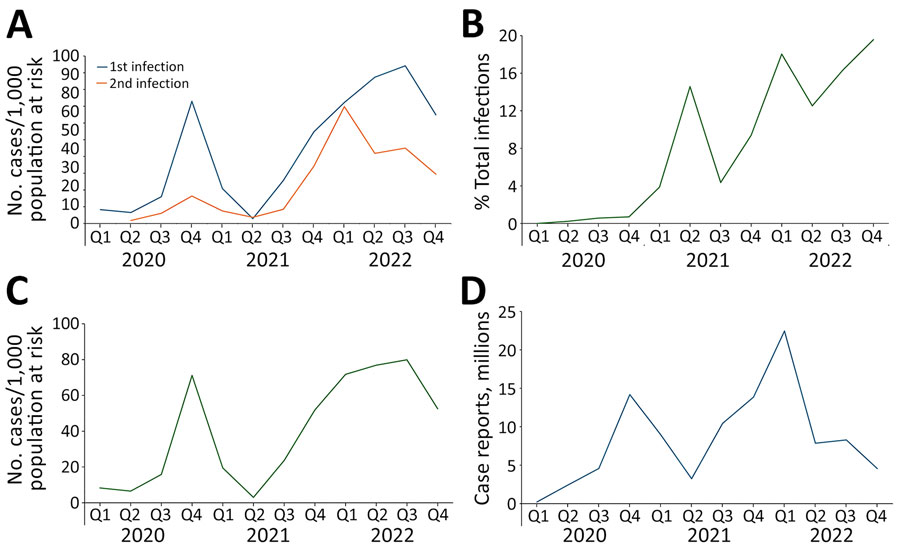Volume 31, Number 5—May 2025
Dispatch
Self-Reported SARS-CoV-2 Infections among National Blood Donor Cohort, United States, 2020–2022
Figure

Figure. Survey of self-reported SARS-CoV-2 infections among national blood donor cohort, United States, 2020–2022. A–C) Swab-confirmed or healthcare provider–diagnosed infections grouped into quarterly bins: US blood donor survey-reported first and second COVID-19 infection incidence (A); reinfections as percentage of total infections (B); and total infection incidence (C). D) Quarterly counts of case reports through the US surveillance system.
Page created: March 03, 2025
Page updated: April 25, 2025
Page reviewed: April 25, 2025
The conclusions, findings, and opinions expressed by authors contributing to this journal do not necessarily reflect the official position of the U.S. Department of Health and Human Services, the Public Health Service, the Centers for Disease Control and Prevention, or the authors' affiliated institutions. Use of trade names is for identification only and does not imply endorsement by any of the groups named above.